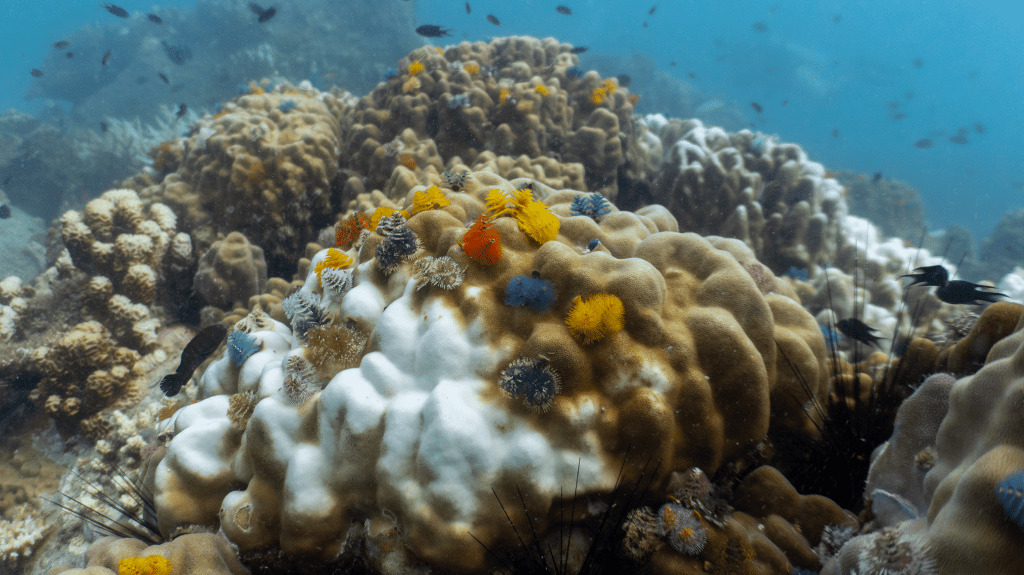Christmas tree worm

The Christmas tree worm (Spirobranchus giganteus) is a species of polychaete worm from the Serpulidae family. They are widely distributed in the tropical seas of the world's oceans. They lead a sessile lifestyle in close association with stony corals (scleractinians), building calcareous tubes in depressions on the surface of their colonies.
The 'Christmas tree' branches of the marine worm are its respiratory and feeding structures (radioles). With their help, it filters water, obtaining nutrients and oxygen. Its feathery radioles are used for filter-feeding and respiration. Tube-dwelling polychaete worms are almost incapable of swimming and lead a sessile lifestyle.
The polychaete worm lives in a calcareous tube that it builds itself, extracting calcium ions from the water and cementing them together. This tube is gradually enlarged with new additions over time.

Most often, Christmas tree worms inhabit large coral species, such as stony corals like Porites and brain corals. When a Christmas tree worm retreats into its tube, it can seal the entrance with a lid-like structure called an operculum, which is further protected by sharp spines. Highly sensitive to danger, they quickly retract into their burrows at the slightest touch or even a passing shadow.
Like their namesake Christmas tree, these marine worms are brightly colored, with hues varying widely: yellow, red, blue, black, pink, white, etc. The marine worm can be found at shallow depths among corals.
The lifespan of Spirobranchus giganteus varies; smaller individuals may live for several months, while larger ones can live up to 4-8 years.

